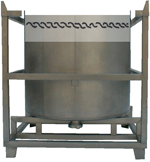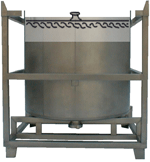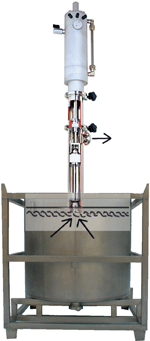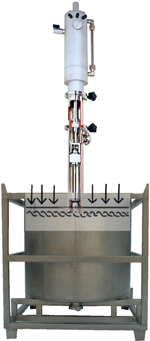A well-known problem when pumping viscous products is that the pump can run dry. The viscous product doesn't seem to flow fast enough to the suction opening of the pump and so the pump sucks in air. In the case of highly viscous products, the pump actually creates a hole in the product, conforming quite straightforwardly to a law of nature: the path of least resistance.
Pumping air requires less energy than pumping the thick viscous product. If the product is pushed into the bowl by placing a follower plate (a floating roof) on top of it, it is possible to prevent air getting to the suction side of the pump (see figure).




Once this is done, the pump can only suck in product. Ambient pressure helps to keep the follower plate in contact with the surface of the product. It exerts a balanced force of up to 10 N/cm2 (1 kg per cm2), pushing the product to the suction opening. With a follower plate measuring 1 m in diameter, this force can rise to a maximum of 7.850 N (in other words, approximately 785 kg).

Although this level is never actually achieved, lower levels are more than adequate to move the product to the suction side of the pump. In addition, no more power/energy is exerted than is needed to displace the product. And so a large hydraulic unit with a pressure system is not needed.